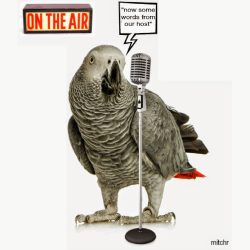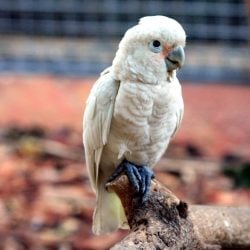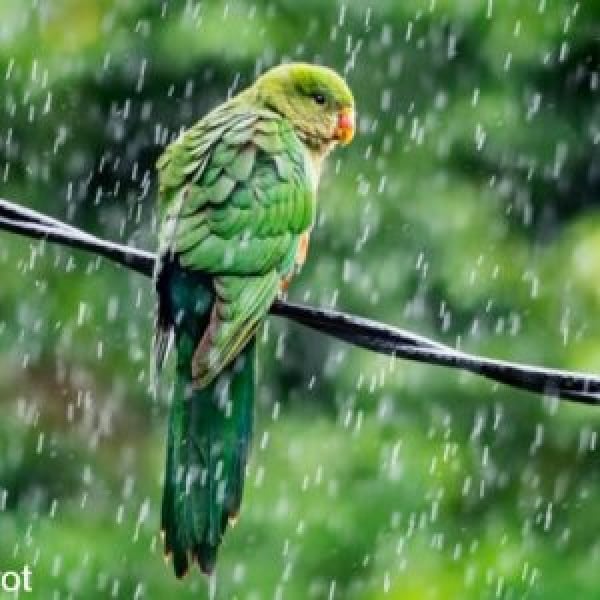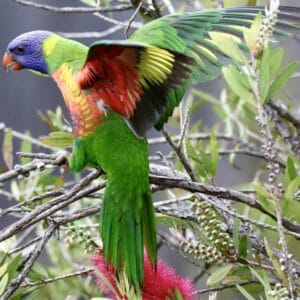Last Updated on by Mitch Rezman
It’s been a quiet summer as far as the Atlantic Ocean storms go — but now in early fall the hurricane season continues until the ocean water cools significantly. Now it looks as if the US East Coast, Florida especially, will be another target along the path of Hurricane Matthew, the strongest hurricane for the longest period of time in a decade.
Wild Parrots in Florida, probably Hurricane Andrew survivors or their offspring, enjoying an outdoor bird feeding station
As a long-time Florida resident, I’ve seen a lot of hurricanes develop and have followed those nearby closely. Never had I checked the storm updates in the morning to learn that a tropical storm had become a Category 1 hurricane and checked back less than 12 hours later to find it had become a huge, raging Category 5 hurricane. That is exactly how Saturday, October 1, developed this year. Hurricane Matthew was still south of Jamaica and soon experienced wind reductions qualifying it for a Category 4, but Category 5 hurricanes are those like Camille in the 1960s and Andrew in the 1990s — deadly, devastating storms requiring months, even years of recovery and rebuilding.
I began early hurricane preparations because predictions showed scenarios where Matthew would either slide up the East Coast from Miami to the Carolinas, with the eye wall never making landfall or a direct landfall somewhere between Miami and Maine but with South Carolina appearing likely. Being an optimistic pessimist, better to start getting ready than to wait until the last moment.
When I did grocery shopping I picked up extra batteries, some large tall candles in glass containers (the glass keeps the wind from blowing out the flame) a few extra cans of tuna and chicken as well as other staples that can be consumed without heat and few or no any sides (baked beans, ramen noodles that can soak in water and soften, peanut butter and crackers), fresh and small cans of fruit that don’t require cooling for both my Timneh African Grey named Timmy and human use Hagen Tropimix.
I’d just stocked up on a new supply of Living World seed parrot food, but had I not done so I would have stocked up on that, too. I also checked that there were sufficient supplements of Lafebers Avi Vera.
He seems to be fearful of thunderstorms so I’m sure the hurricane will cause him stress. In fact, at the first hint that the hurricane would definitely impact us, I started him on low doses of AviCalm to prepare him for the scary storm. If he showed signs of stress, I would increase his dosage.
History Lesson: When Hurricane Andrew wiped out South Miami and its southern suburbs all the way south to Homestead Air Force Base, many people had to leave their parrots or other pets in their homes or aviaries while many others refused to evacuate because of not being able to take their pets. The total destruction resulted in many parrots escaping as their homes were destroyed.
The same happened during Hurricane Katrina with one breeding pair of macaws found alive and hungry, after days of floating in their plastic 55-gallon drum nest box. In both of these cases and many other mandatory evacuations, many people refused to leave their homes because they could not take their pets to safety, increasing the total human and animal death toll.
These horrible tragedies resulted in legislation both federal and additional laws in most states stating that shelters for animals must be made available during hurricanes and similar natural disasters. According to AnimalLaw.info, “In 2006, the federal Pets Evacuation and Transportation Standards (PETS) Act (42 U.S.C.A. § 5196a-d (2006)) was passed. PETS directs the Administrator of the Federal Emergency Management Agency (FEMA) to develop emergency preparedness plans and ensure that state and local emergency plans take into account the needs of individuals with pets and service animals during a major disaster or emergency.”
Wild Parrots in Miami Cling to Office Building Seeking Shelter from Wind/Rain, most likely survivors from aviary or home hurricane damages in previous years
On Tuesday, October 4, Florida Governor Rick Scott tweeted the message below and contacted the US President to enlist help from FEMA, the National Guard and many other resources so that help would be available immediately to devastated and damaged areas after Hurricane Matthew passes. This crucial step was not perform by the governor of Louisiana, causing help to be long in coming for evacuees of Katrina who lost everything they owned.
Also on Tuesday, vendors located in Florida that do business with Windy City Parrot (WCP) notified WCP that any orders had to be in early so they could be shipped by Wednesday noon since they expected to have to close for the hurricane. By Wednesday night the south Florida areas were beginning to feel the outer bands of the hurricane and soon hurricane-force winds hit the southernmost portion of the state.
Wednesday morning, October 5, I returned to the store to try to obtain more candles, additional bottles of water, and more food that required little or no preparation. My roommate and I had a long discussion, both of us seasoned hurricane survivors. We decided to remain in our sturdy concrete block constructed apartment. This building has withstood years of storms, including repeated direct landfalls of Category 3 and 4 hurricanes. I would not recommend to anyone else that they stay, yet many in our apartment complex planned to remain here.
I checked our emergency kit, made sure we had prescription medications as well as commonly needed over-the-counter products such as alcohol and peroxide, bandaids, gauze left over from my roomie’s leg amputation, medical tape, OTC pain relievers, allergy products, and antibiotic ointment. These items were placed in a small piece of luggage and labeled.
Timmy’s evac kit was checked to be sure product use-by dates were current. I packed all the vitamins and supplements. Some of these are special needs products and if I do not need them I could share them with other parrot parents in need after the storm passes. I added paper towels, terrycloth towels, extra dishes, all his monthly supply of food, toothpicks (emergency splints), and self-adhesive tape that requires no clips or adhesive.
On Wednesday, Port Canaveral, just two miles north of our apartment, shut down all operations at 12 noon, both on land and on the water. Waterfront restaurants closed, portside businesses of all kinds had to close and all ships from the largest cruise ship to small recreational boats and everything in between had to be in safe haven to ride out the storm because no ship could leave or enter the port. This happening this early assured me the storm was pretty bad and was likely to do damage here, even if the eye didn’t pass over us.
Having decided to stay here for this storm, we were hoping and praying the storm eyewall continued to remain offshore so that only the bands of wind and rain would hit us. But we knew we were prepared and from the best weather reporters we knew to expect 70 to 140 mph sustained wind speeds with even stronger gusts.
During the night the winds got higher and higher with really strong gusts, near 120 mph at least and sustained winds were 80-100 mph. The rain became torrential, pounding our windows with sounds that made me feel as if the glass would surely break. But nothing resulted in any glass breakage, at least not in our apartment.
The storm continued until around 10 am Friday morning when it began to ease slowly. By Friday evening all that remained was a slight drizzle and grey skies.
Saturday dawned bright and sunny. We surveyed the complex to see metal carports twisted like straws everywhere, a few cars damaged, some broken windows and many people without electric service. Some who had electric did not have internet or cell phone service. But we felt really grateful that all the people, pets, as well as me, my roommate and my parrot Timmy were just fine through it all.
No matter what the potential disaster, always be prepared before disaster strikes and check your level of preparedness as soon as you become aware of possible danger with evacuation cages your birds are accustomed to and have practiced going in and out of, food, other supplies and all the basics for you and your parrot to survive for a week or more. Prepare for the worst but pray for the best. We were fortunate that our situation proved to be far from the worst even though it wasn’t the best.
Written and approved by the windy City Parrot content team
Author Profile

Latest entries
 Bird & Parrot CareJune 20, 2025Understanding the Best Way to Use Prevue Pets Mimic Me Voice Trainer
Bird & Parrot CareJune 20, 2025Understanding the Best Way to Use Prevue Pets Mimic Me Voice Trainer Bird BehaviorJune 6, 2025How Do I Keep My Parrot From Dumping His Food Every Day?
Bird BehaviorJune 6, 2025How Do I Keep My Parrot From Dumping His Food Every Day? Birds & LightingMay 16, 2025I Am Seeking Clarity About Lighting for My Birds Cage
Birds & LightingMay 16, 2025I Am Seeking Clarity About Lighting for My Birds Cage Bird RescueApril 29, 2025How Do We Re-Home a 17 yr Goffin Cockatoo?
Bird RescueApril 29, 2025How Do We Re-Home a 17 yr Goffin Cockatoo?




